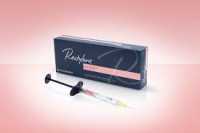
21 May FDA Approves Restylane Kysse to Enhance Lips and Decrease Wrinkle Lines
MedicalResearch.com Interview with:
Dr. Melanie D. Palm, MD, MBA
Board-certified dermatologist and cosmetic surgeon
San Diego, CA
Clinical investigator in the Restylane Kysse phase 3 Galaderma trial
Dr. Palm discusses the recent announcement that the FDA has approved Restylane® Kysse for lip augmentation and the correction of upper perioral rhytids (wrinkles) in adults over the age of 21.
MedicalResearch.com: What is the background for this announcement?
-
- Restylane® Kysse has been approved and used in Europe and Canada for several years. It is now the first FDA-approved hyaluronic acid (HA) lip filler in the U.S. formulated with XpresHAn Technology™ (pronounced ex-‘spre-shan’) for smooth, natural-looking results.
- It is FDA-approved for use not only in the lip but for improvement of upper lip lines.
- Restylane Kysse is the third product (following Restylane Defyne and Restylane Refyne) in the Restylane family of fillers to use XpresHAn Technology™ which allows for a gel that integrates into the skin for natural expression in motion
MedicalResearch.com: What are the main findings of the underlying studies?
Restylane Kysse has been evaluated in multiple clinical studies that show it provides lip fullness, improves the appearance of the lines above the mouth and provides long-lasting results.
Phase 3 data supporting the FDA approval showed that a lower amount of filler was needed to show an improvement in lip fullness – Restylane Kysse (1.82 mL), Juvederm Volbella (2.24 mL). Lip fullness was improved 8 weeks after treatment in 87% of patients and remained ≥60% up to 1 year.
How does Restylane® Kysse differ from other dermal fillers?
Response: Restylane Kysse is the first and only HA lip filler formulated with XpresHAn Technology™ to enhance lip volume and minimize the appearance of fine lines above the mouth. It naturally integrates into the skin’s tissue so it results in a more natural looking appearance. It has also been shown to improve lip texture and provide increased rosiness to lip color.
MedicalResearch.com: What should readers take away from this research and why is this approval significant?
-
- Safe & Effective:
- Restylane Kysse is safe and effective for lip augmentation and correction of fine lines above the mouth with results that last for up to 1 year.
- High patient satisfaction:
- Results from the Phase 3 study showed that by week 8 after treatment, ≥90% of patients were satisfied with their lips and majority were also less bothered by the lines around their mouth.
- Natural results, even with animation:
- The approval of Restylane Kysse allows me to provide natural-looking results for my patients’ lips that they are satisfied with when they speak, smile or even kiss.
- Safe & Effective:
MedicalResearch.com: What recommendations do you have for future research as a result of this work?
-
- I was a principal investigator on the Restylane Kysse clinical trial for U.S. FDA approval. I am also a physician trainer, advisory board member and consultant for Galderma.
- In the Phase 3 trial, this is perhaps the only study where I have seen that patients’ perception of lip improvement outpaced the investigators. This demonstrates that patients are very pleased with their lips post-injection
JOIN OUR EMAIL LIST
[mailpoet_form id="5"]We respect your privacy and will never share your details.
[last-modified]
The information on MedicalResearch.com is provided for educational purposes only, and is in no way intended to diagnose, cure, endorse or treat any medical or other condition. Always seek the advice of your physician or other qualified health and ask your doctor any questions you may have regarding a medical condition. In addition to all other limitations and disclaimers in this agreement, service provider and its third party providers disclaim any liability or loss in connection with the content provided on this website.
Last Updated on May 21, 2020 by Marie Benz MD FAAD

